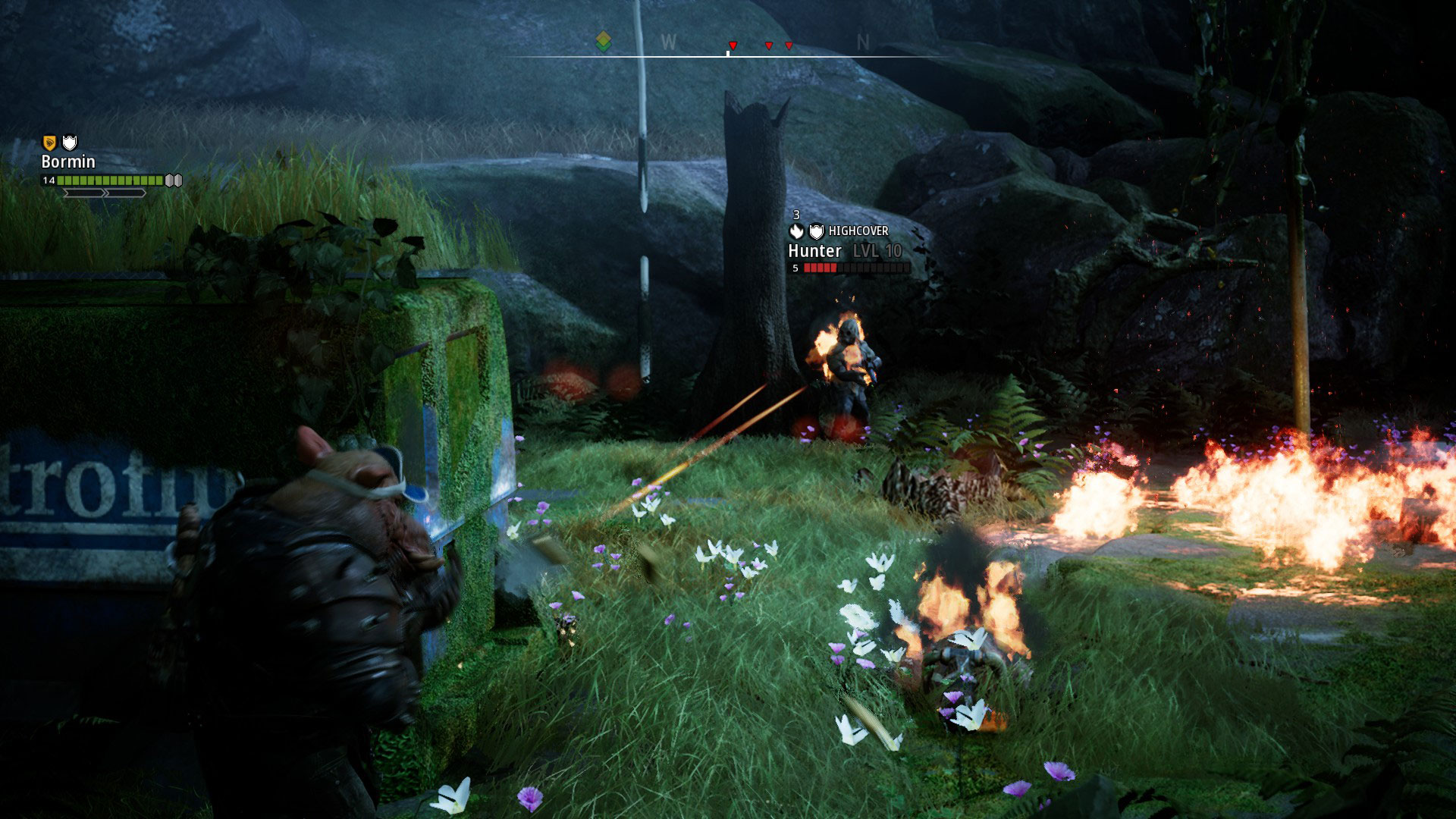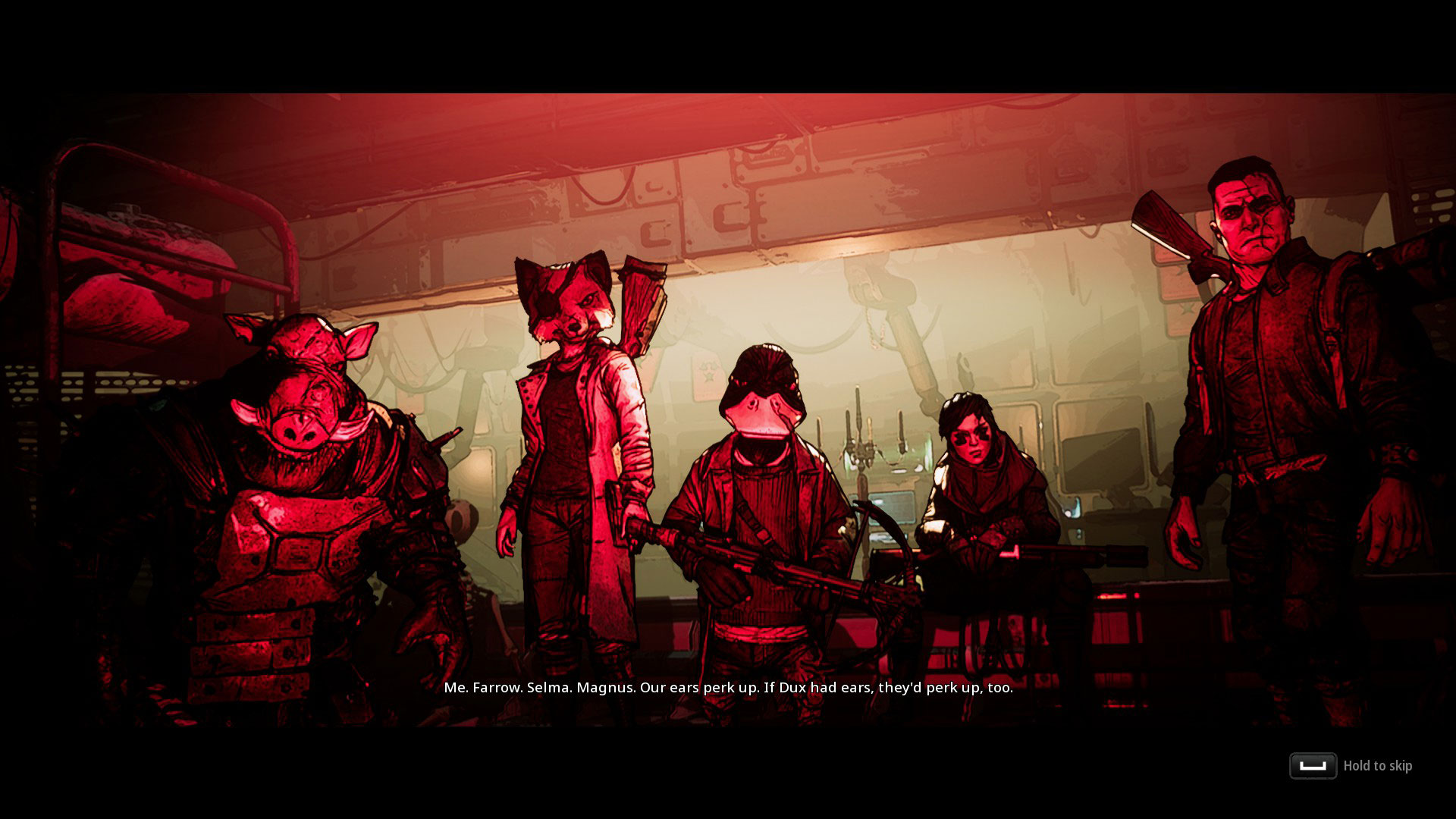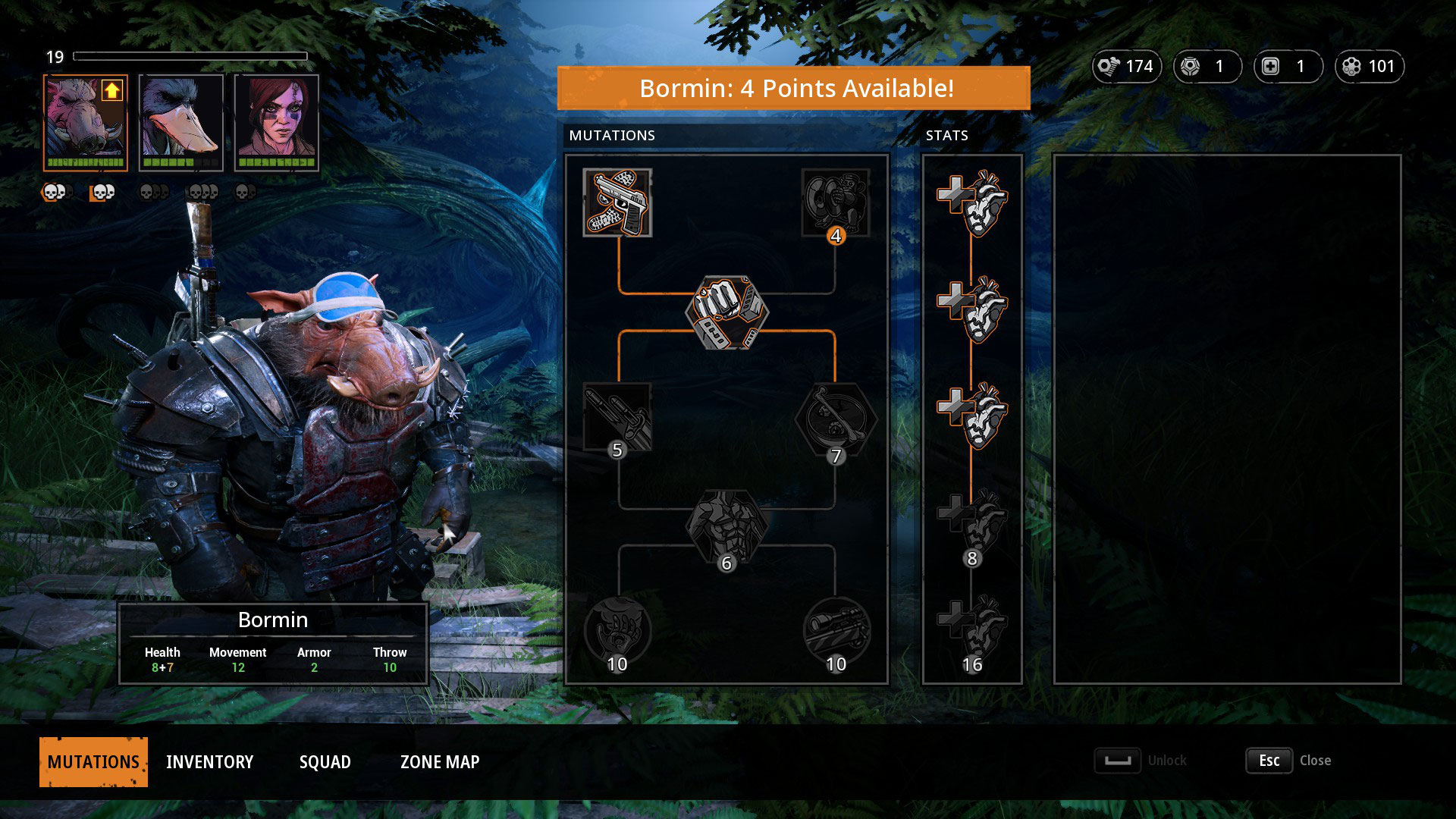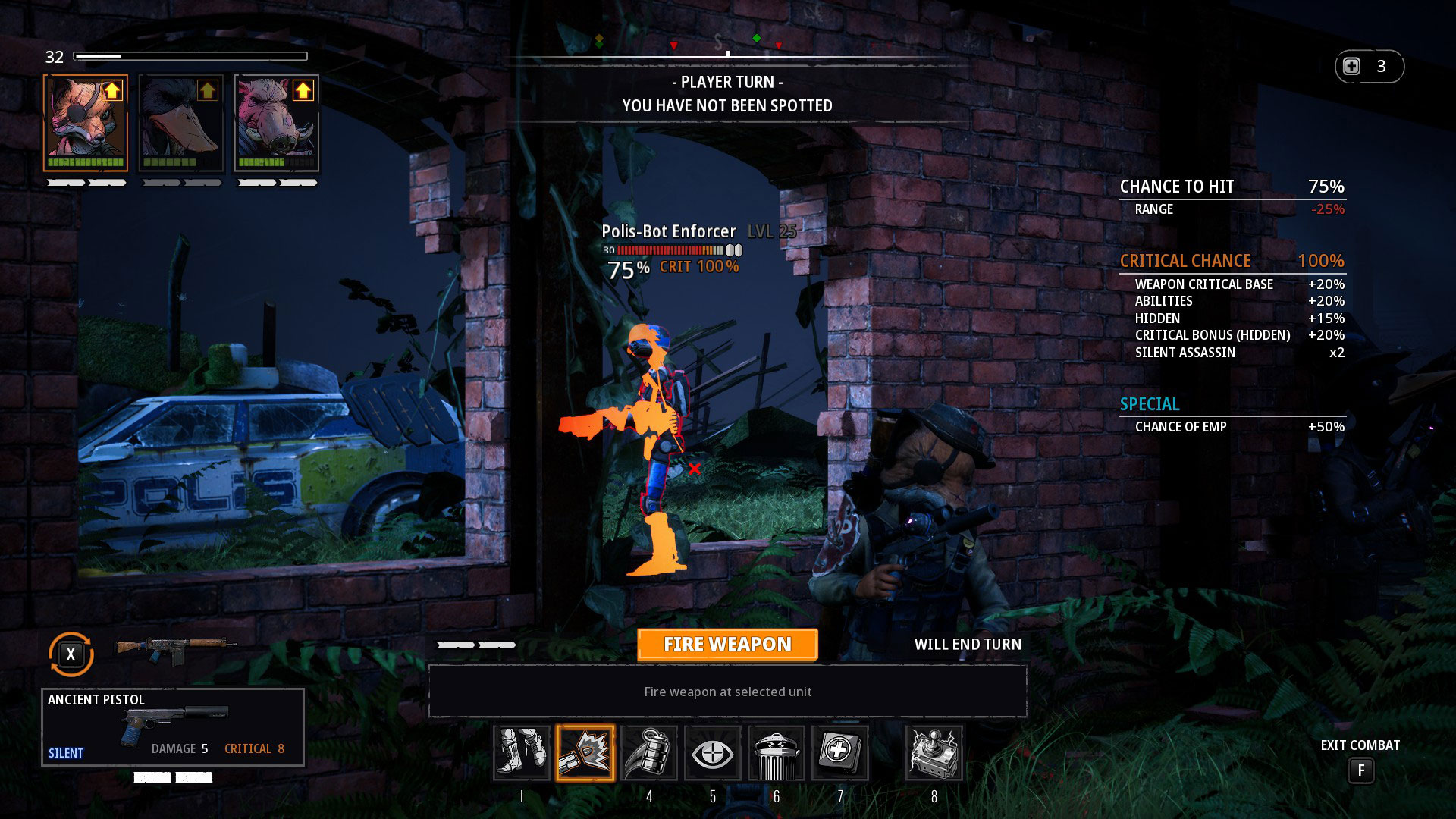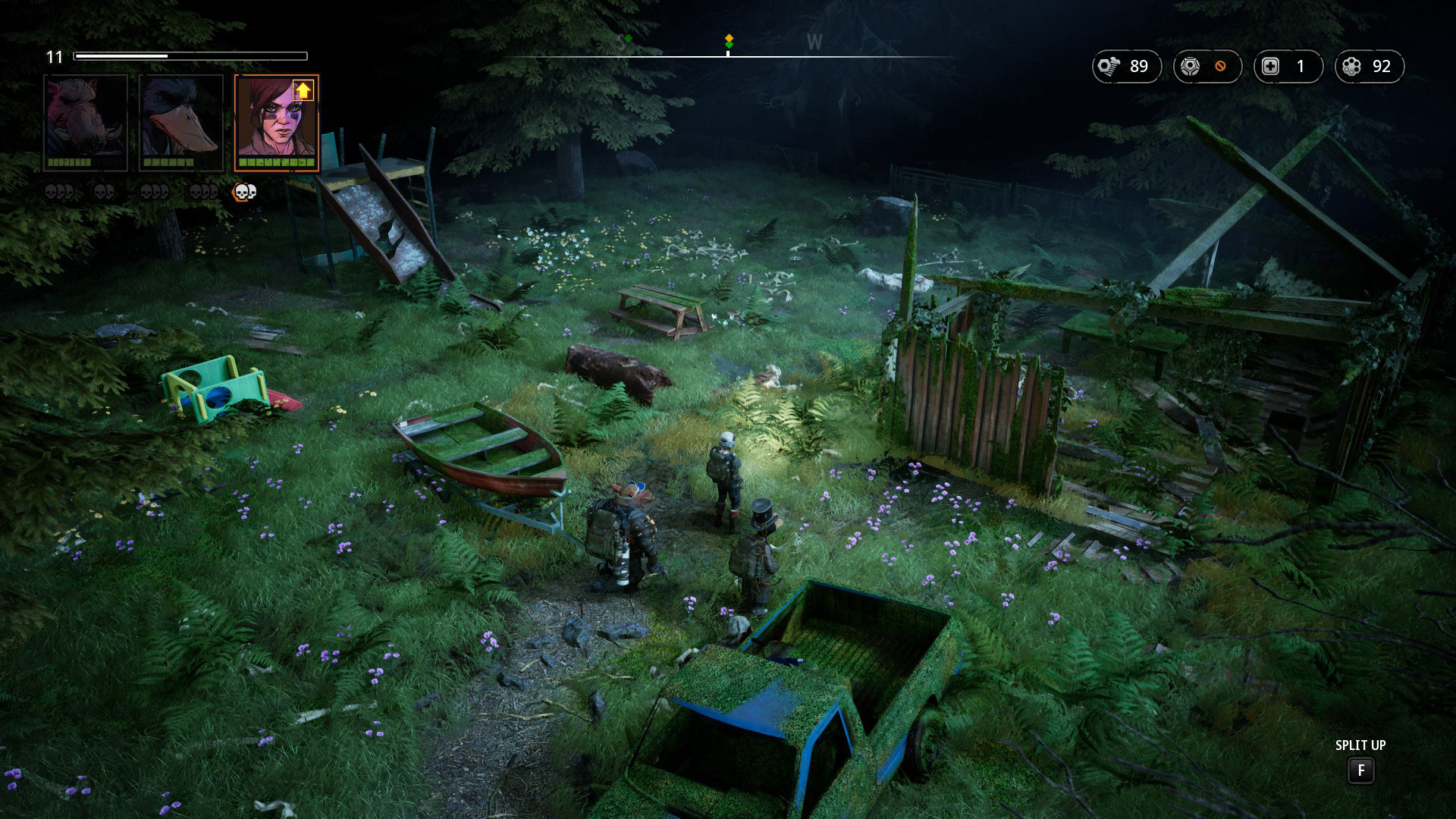
My first introduction to the Mutant world was with the introduction of its pen and paper RPG. While I never got to play it or own any of the books for it, I became surprised with the announcement that a video game adaptation, Mutant Year Zero: Road to Eden, was happening. Still however, I felt a bit of hesitation due to one specific nature of the game. I love turn based strategy games however I have something to admit – I don’t like XCOM: Enemy Unknown as well as XCOM 2. From its silly difficulty spikes to the dreaded 90% chance to hit repetitively missing, I would constantly find myself trying to enjoy the game but never could. When I booted up Mutant Year Zero I was met with excitement and worry – read on to find out whether or not the game is worth it.
Mutant Year Zero: Road to Eden
Publisher: Funcom
Developer: The Bearded Ladies
Platform: Windows PC (Reviewed), Playstation 4, Xbox One
Release Date: December 4th, 2018
Players: 1
Price: $34.99 Standard Edition, $54.99 Deluxe Edition
After the world falls into war and humanity is on the brink of extinction, the Ark stands as the last base of humanity. The Ark is a makeshift city built high off the ground to protect its citizens from the dangers of the war ravaged world.
Mutants are sent out to find much needed supplies for the needs of the Ark. Two of the protagonists are Bormin, a hard as nails anthropomorphic boar, and his cynical companion duck simply named Dux.
Upon the duo’s return from finding salvageable scraps and supplies they are sent out again with a mission. The Arks gearhead went out with a group of mutants and has not returned. Fearing for his safety, they are tasked with finding him out in the wasteland.
Throughout their adventures and meeting new squad members they search for him and uncover the secrets of the world, the meaning for their own existence, and clues behind the mythical paradise known as Eden.
While the game itself does have guidance in its storytelling through the use of both engine rendered and hand drawn cutscenes, a lot of the story is told during your time of play. Conversations with the characters do help bring out more of their individual thoughts and feelings. However, a lot more context of the world is brought out through the finding of notes and well as mundane items to our modern world, but are held as artifacts within the environments.
While the games storytelling is not its strong suit and mostly relies a few key mission elements to guide the player from point A to point B, I did find myself taking every conversation, note, and clue to unravel the mysteries of the games world and enjoyed each moment doing it. It is easy, however, to miss out on the games lore or create confusion by going in an area much higher in level than you are early on – when your not really supposed to.
However, at the end of the game I did feel let down. When all of the surprises tied together the game ends very abruptly. I found my self pleading with the game to have more content to create a sense of closure when the credits rolled. It was frustrating to be left on a note that should of led up to another set of confrontations in one final epic showdown but instead I was left with the feeling of wanting more.
As an abundant whole the audio of the game works very well but nothing really stood out. While this could be a negative in most cases, I don’t believe this to be a fault as each bit of audio ties together with the game nicely. Much rather when playing the game everything just fits in the audio design and did exactly what was needed. More often some games would have a huge selection of sound effects with parts that don’t seem to fit, I am thankful that Mutant avoids this.
The same can be said for the soundtrack of the game. The score focuses more on creating ambient music that suits with the current situation than having it being more grandiose than what it needs to be. The music just stayed consistent during game play and tied into the game very well. To change up the pace at some points, the ambient background music would change to 1980’s style synthesizer music reminiscent of science fiction movies of that time.
While there are not too many characters in the game, they are all voice acted very well. From Dux’s cynical attitude to the slow and careful wording of an ageing old man, I never had a point where lines felt over exaggerated or phoned in. The execution of each line was able to add good insight on the mannerisms of each character nicely. However, it’s a shame that conversations were few and far between unless specific key points happen.
Mutant Year Zero’s visuals do not stand out as overly done or too complex. I found that the games models for buildings, obstacles, and terrain are more simple when it comes to modeling, compared to most games that push for visual flair. Even visual effects, such as explosions and fire, are also not as flashy compared to most games utilizing Unreal Engine 4. Still, it’s easy to point out in areas where objects on screen will appear flat and have some blurry textures and could obviously use some touching up around the game.
Still, the game stood out as visually appealing due to the use of color. Mutant Year Zero utilizes a much more simple graphical quality with a lot of appreciation for more natural color vibrancy. It was refreshing to see the game utilizing a wider range of colors rather than what you would see in most post apocalyptic games, which typically focus on using muted colors.
One minor thing about the graphics I do have is with some of the character models. Human based characters such as Selma, Magnus and the elder all seemed to have less detail to them compared to the anthropomorphic characters Dux, Farrow, and Bormin. While not disruptive to the game, the first time I saw Selma and the elders’ faces something about them felt off and too simplistic. Compare this to Boremin, where you get a lot of details with his hair and wrinkles, all of which are visually striking.
On the PC for the ultra-wide screen enthusiasts I am happy to report that the game does support resolutions of 3840 X1080 and beyond (as shown above). While it does suffer from some zoom removing some of the visible area, the game still ran fine and played very well. While some may need to mess with the games graphical settings such as resolution scaling, the game was fully playable on my Samsung CHG90 43 inch monitor and looked very nice.
From the audio, the story, graphics, and voice acting, everything in its presentation just fit cohesively together. It was hard to find something that jumped out and wowed me as a standout aspect of the game. Deliberate or not, I came to find myself being engaged with the world without any type of offbeat interruptions from something weird or unexpected being put into the game. Everything just tied together nicely without feeling overly processed or out of place.
As you play and progress through the game you are given a limited group of ragtag characters to use with three on the field at a time. Each one of them focuses on a specific field of expertise compared to the other. For example, Bormin is more geared to be a upfront tank, while Farrow is more adapted at sneaking around the field to get critical hits and pick offs. As you play and take down enemies you’re granted experience on a shared experience bar and everyone gains a point per level to add more to your characters abilities.
While you are allowed with experience to upgrade your characters stats, the options are very limited. As you go down the line of a growth tree adding more hit-points or reinforcing you charters field of expertise, each one of them has a tree of major and minor mutations to select from.
What was disappointing for myself is that each character really only had a few mutations that were unique to themselves and shared minor mutations with other characters. Still, as you buy, find, and turn in artifacts, you can squeeze a few more upgrades out for everyone such as better grenade damage or health packs healing more.
Much to the same point with upgrades, weapons did not have to much options for them as well. Each weapon has some traits specific to them as well and traditional damage, critical damage, critical hit chance, clip size and range. Each one allowed for two attachments such as scopes that increase critical hit chance or range, or other modifiers such as burning chance for extra damage, emp to disable robot enemies, and knock enemies away. Each weapon also can have 3 upgrades that increases damage as well. They don’t go very in-depth, but it does overall get the job done.
During my mission I would travel from zone to zone in real time. The constant need to search every square inch of a map for much needed scrap, med packs, weapon parts, grenades and equipment became essential for my playthrough. Even using the ability to sneak around maps, I was able to quietly go into areas much higher level than should be in order to find more resources to aid me.
The sneaking in the game is definitely the defining feature that added a lot more engagement during my time of play. Not only would I hide from the sight of enemies, I would also be able to plan any ambushes I had and wait for the perfect time strike. This worked so well coupled with the combined use of silenced weapons modifications and abilities.
I also be able to take down some enemies much higher level than I would have been able to with guns blazing. Interestingly enough, If I was able to take my target down before he alerted other enemies on the map, I would exit out of its turn based combat mode and plan my next strike. Overall I had a strong sense of control picking my fights through smart play and that would continuously be a key in winning fights or getting a quick game over.
Combat itself does play in a cover-heavy turn-based combat style such as XCOM: Enemy Unknown and its predecessor. Utilizing the same mechanics to take cover as well as hit percentages, this should feel similar to fans of the previously mentioned series. I was constantly thinking of what actions an enemy may take, while trying to find locations that are more advantageous for a clear shot towards victory. With the combination of sneaking around and taking out easy pickings, rarely did the game ever feel unfair.
I would find my self counting how many times I hit an enemy and how many times I would miss. The few cover based, percentage driven strategy games always seemed to have its numbers skewed where 75% chance to hit felt more like 10%. I did not have this issue and the numbers felt more consistent, giving me a much more pleasurable gameplay experience.
The vast majority of the time I played and had a hard time with the combat usually ended up being my own fault. I would frequently find myself becoming too eager to clear an area, and would end up not noticing an enemy that can alert everyone of my location. The majority of my deaths were me not taking the time to plan out my attacks and picking off enemies away from the crowd.
Even still, the game on the highest difficulty felt like the challenge was just right for me. Sometimes I would walk away without taking too much damage, getting the best outcome I could hope for, while other times I would walk out by the skin of my teeth. Frequently, just as I could kill off higher level enemies by being patient and using the right combination of skills, lower level enemies could kill me just by me not being prepared.
If you pick up this title I do have to stress one key point with this game. At the start when selecting the difficulty do yourself a favor and play it on very hard. Normal and Hard difficulty do not change the games AI, instead enemies will do less damage, all or half your health will regenerate after combat, or skill cool downs will reset.
Hard mode shuts those features off and increases enemy damage. With the game not respawning enemies and keeping every resource not being farm-able, this directly makes everything you find in the game far more valuable and creates a much more intense experience. For those who want to go one step further, there is the “Iron Mutant” mode that has permadeath and disables manual saves.
While I did enjoy my time, I did expedience a few bugs every so often. The most frequent occurred when hiding or taking cover. Some times characters would not go into the position I attempted to place them and instead opt to go one space over our around the corner.
They usually occurred when sneaking around, this would cause my character to be stuck in an area where they would be caught and combat would imitate trying to move them to safety. Also, in one rare instance in one exact location, during combat one of my units clipped through a wall rendering him unable to be moved but still able to shoot enemies through the ground.
The only other one I experienced during combat would occur at the start when I initiated combat. All my player characters would be cough in a animation loop for 10 seconds before allowing combat to start. While this did not cause major issues it still looked strange.
In one point however, one of my enemies did the exact same thing but for longer. The end result did cause the enemy to stop all animations during movement and instead just move to a location that the AI designated them to go to on the map.
One major fault I do have with the game is its length. The game reportedly takes roughly 12 to 15 hours to beat. While I did play far longer clocking in at 45 hours in total, I took the time to experience as much as I could, finding everything I can, and constantly retried different locations from a save point in order to fine tune my tactics and see if I could execute fights better.
I do wish that the game was longer in terms of story. The ending made the game feel like there should be more in terms of game content and as a result I wish had another 5 to 10 or so hours more of game time. PC gamers should be warned however that this game does use Denuvo DRM.
As a whole I really did enjoy my time with Mutant Year Zero: Road to Eden quite a bit. It may not win any game of the year awards, however it is a damn good time. While DRM might turn you off, Mutant Year Zero: Road to Eden is a great experience, has good value, and is definitely worthy of your money.
Mutant Year Zero: Road To Eden was reviewed on Windows PC using a review copy provided by Funcom. You can find additional information about Niche Gamer’s reviews/ethics policy here.
The Verdict: 8.5
The Good:
- Stealth mechanics add more to the tactical gameplay
- Great characters and world setting that leads to some fun conversions
- Very hard difficulty challenging without feeling unfair
The Bad:
- Ending leaves a feeling of wanting more from the game.
- Storytelling is not its strong suit.
- Some aspects of graphics could use more polish
This game was reviewed on my custom built PC with the following specs:
- Operating System: Windows 10 Pro 64-bit (10.0, build 16299)
- CPU: AMD Threadripper 2990 32-Core
- Motherboard: Asus ROG Zenith Extreme
- Video Card: EVGA NVIDIA GeForce 2080 RTX TI
- Memory: 128 GB Trident Z RGB DDR4-3333
- Storage: Sasumng 970 PRO 1TB PCIe NVMe M.2 – Raid 0
